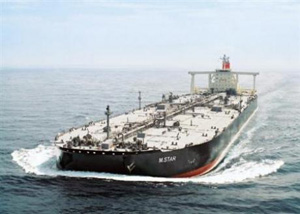 Reuters: Officials from Iran and India will meet on Friday for talks on a dispute over how India makes payments for $12 billion worth of crude oil imports a year.
Reuters: Officials from Iran and India will meet on Friday for talks on a dispute over how India makes payments for $12 billion worth of crude oil imports a year.
 Dec 30 (Reuters) – Officials from Iran and India will meet on Friday for talks on a dispute over how India makes payments for $12 billion worth of crude oil imports a year.
Dec 30 (Reuters) – Officials from Iran and India will meet on Friday for talks on a dispute over how India makes payments for $12 billion worth of crude oil imports a year.
The dispute escalated on Wednesday when Tehran refused to sell oil to the world’s fourth-biggest crude importer after New Delhi imposed prohibitive new rules.
Last week, the Reserve Bank of India said deals with Iran must be settled outside a long-standing Asian Clearing Union system.
Iran is under global pressure over its nuclear programme, and though United Nations sanctions do not forbid the purchase of Iranian oil, the United States has pressed hard for governments and companies to stop dealing with Tehran.
UN sanctions on the financial sector make financing trade and clearing payments difficult.
Supply of around 400,000 barrels per day (bpd) of Iranian crude to state-owned refiners and privately owned Essar Oil in India is at risk. This is the equivalent of about 13 percent of the crude processed in India last month.
IS IRAN LIKELY TO STOP SUPPLYING INDIA?
Analysts and oil traders expect the two countries to resolve the issue, given the large volume and value of the crude at stake and the difficulties Indian refiners would face in finding alternative supplies.
“They (the United States) have themselves not been willing to sanction crude sales from Iran (to the international market) for the obvious balance of supply and demand,” said Samuel Ciszuk at IHS Energy consultancy.
“However, informally they (the United States) have been using financial sanctions as the main tool of pressure to cause uncertainty and insecurity for Iran. They want to make sure no one finds it easy to deal with Iran,” he added.
Oil traders in Asia also said they expected sales to resume because a full suspension would be too costly for India.
Indian refiners may have to explore alternative payment methods such as open credit or barter trade, one trader said. These are already used by some of Iran’s oil trade partners.
Ambika Sharma, deputy secretary general at the Federation of Indian Chambers of Commerce and Industry, said: “The two central banks could look at settling the trade transaction in a currency other than the euro and the U.S. dollar”
India has been one of the top three buyers of Iranian crudes along with China and Japan, and Iran is the second-biggest supplier of crude to India after Saudi Arabia.
WHAT HAPPENS IF IRAN STOPS SUPPLYING INDIA?
Spot prices for alternative crude on physical markets would probably rise as Indian refiners search for suppliers to plug the gap left by the shortfall from Iran.
But prices for Iranian crude would probably fall as it looks for new buyers or seeks to boost volumes to existing buyers.
International crude futures could rise on concern that the disruption would become more widespread and that other countries could also struggle to find ways to make payments. Iran’s other main Asian buyers said on Thursday, however, they saw no disruption in supply.
If both sides find alternatives, the market impact is likely to be shortlived once new trade patterns are established. The total supply and demand of crude on international markets would be unchanged.
If Iran fails to find alternative buyers, oil prices would rise until other oil producers plug the supply gap. India buys about a fifth of Iran’s 2 million barrels per day of exports. That 400,000 bpd is around 0.5 percent of the global oil market.
WHAT WOULD IRAN DO WITH OIL IT COULDN’T SELL?
When Iran struggles to find buyers for oil, the country typically stores crude on tankers, mainly very large crude carriers (VLCCs). In the short term, Iran could use VLCCs and fill oil tanks on land as it searches for new buyers.
Iran was storing as much as 35 million barrels on VLCCs as recently as April.
In recent weeks Iranian crude estimated to be held in floating storage has remained static at seven VLCCs, a shipping source said. A VLCC can hold up to 2 million barrels of crude oil.
Traders told Reuters late in October that the volume of Iranian crude stored at sea had fallen by as much as 4 million barrels because of a spike in Asian demand at that time.
WHERE WOULD INDIA FIND ALTERNATIVE SUPPLIES?
India could look for alternative suppliers in the Middle East such as Iraq or Saudi Arabia or even further afield in West Africa.
In Iraq, a massive drive to overhaul ageing infrastructure and operations is leading to the first supply increases at its oilfields, although to date the volumes are small.
Saudi Arabia has 4 million bpd of spare capacity and is the only oil producer that could compensate for a sizeable disruption of supply from regional rival Iran.
But like Iran, it is a member of the Organization of Petroleum Exporting Countries and is constrained by the group’s supply agreements. It may be reluctant to step in to fill a supply disruption left by a fellow OPEC member.
India’s Reliance Industries, which stopped buying Iranian crudes this fiscal year beginning April 1, has turned its focus to importing Latin American crudes.
India may step up imports of Latin American crude in coming months after an annual 61 percent jump in the January-November period.
An Asian oil trader said private refiners could obtain higher volumes on a sustained basis from South America, particularly Venezuela.
Essar Oil, which has reduced imports of Latin American grades after getting local supplies, may shift back to South American grades, while state refiners would prefer to tap African crude, traders said.
(Reporting by Florence Tan and Simon Webb in Singapore, Nidhi Verma in New Delhi; Jonathan Saul in London; editing by Jane Baird)


